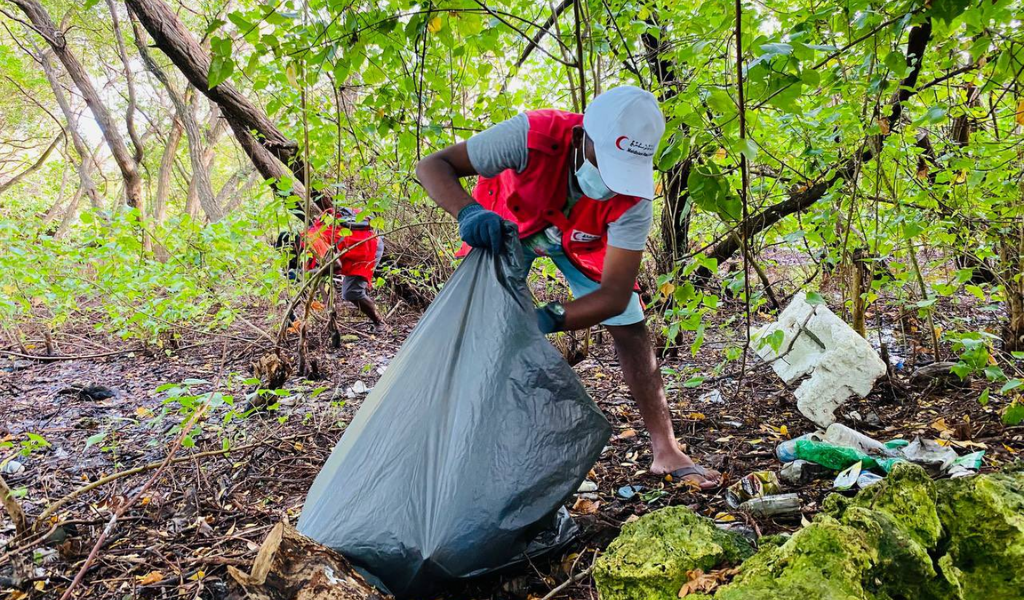
The First of Many Steps in Maldivian Red Crescent’s Ecosystem Restoration Work
The Maldivian Red Crescent launched its pilot project to promote nature-based solutions as part of its commitment towards ecosystem restoration on this World Environment Day.
Designed as a two-fold approach around advocacy and sustainable activities, the program focuses on Ecosystem-based Disaster Risk Reduction (Eco-DRR) and Ecosystem-based Adaptation (EbA) methods. In other words, MRC will be deploying nature-based solutions through coastal vegetation and restoring mangroves.
In this regard, on Saturday, MRC H.Dh. Branch team was out at “Maafalu Fengan’d”, a wetland in Kulhudhuffushi island, conducting a clean-up activity. Wetlands are an important part of our ecosystem that acts as a resilient barrier against natural disasters such as flooding, and help in reducing the impact of waves and storm surges too. The team collected a significant amount of single-use plastic and other waste materials that had aggregated in the area.
Meanwhile on the southern tip of the Maldives, a team of Migrant Volunteers from the MRC Addu Branch planted a collective 220 coconut palms and Kin’bi gas on the shoreline surrounding the Hithadhoo Flat Area. The coastal vegetation plays an important role in protecting the shoreline by reducing disaster risk, hazard, vulnerability, and exposure. The Addu branch aims to contribute planting 500 coconut palms to the Addu City Council’s initiative of planting 100,000 coconut palms in the city.
Eco-DRR and EbA are proven environmental restoration methods inspired by nature that are cost-effective, flexible, and beneficial in the aspects of reducing disaster risks. MRC is committed to working on rebuilding the ecosystems back to its natural health around the Maldives.